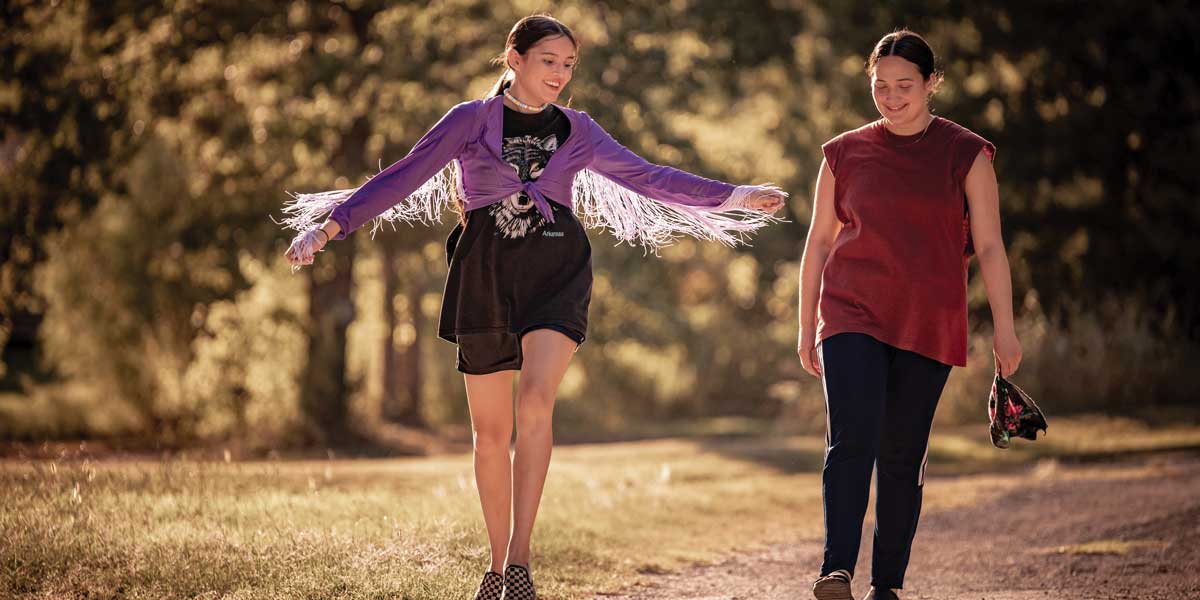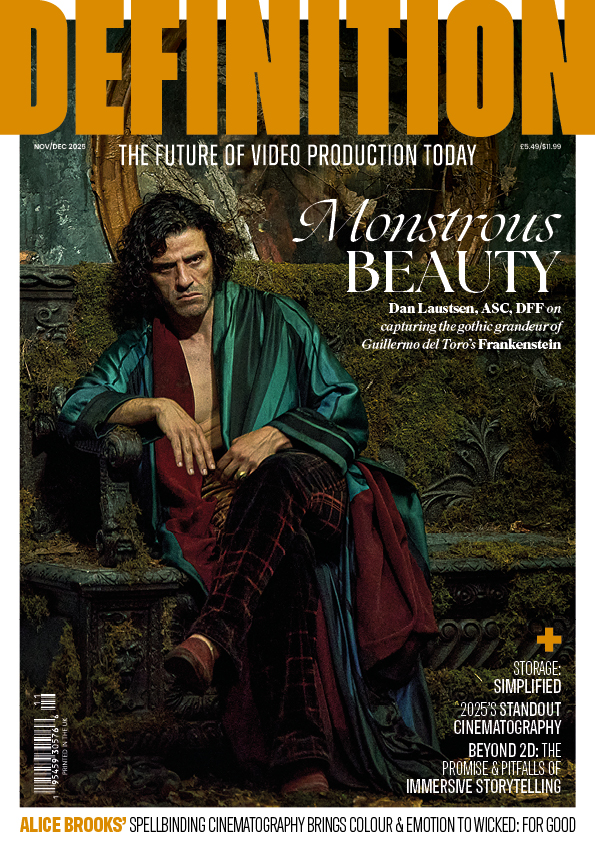
Fancy Dance
Posted on Sep 23, 2024 by Samara Husbands
South-western Sun
Created by Indigenous director Erica Tremblay, Fancy Dance maintains its authenticity as a look inside Native-American life. The setting – Oklahoma – is central to the story, with DOP Carolina Costa bringing out its beauty
Words by Katie Kasperson
Fancy Dance is a story deeply rooted in its setting. Native to Oklahoma – where the film takes place – and a member of the Seneca-Cayuga Nation, writer/director Erica Tremblay crafts a nuanced tale of Indigenous life, focusing on the ‘missing and murdered’ epidemic while delivering an affecting family drama. A self-proclaimed ‘outsider’, DOP Carolina Costa assembled a team of locals and established a visual language that captures the ‘beauty in everyday life’.
Lay of the land
“Where do you find the magic?” asks Costa. “That’s the beautiful thing an outsider can bring to the table.” Originally from Brazil, Costa saw Oklahoma with fresh eyes. She immediately clicked with Tremblay; “Erica later told me that she knew, from that first meeting, that I was the right partner to make the movie with,” recalls Costa, likely because she related to the characters on a human level.
‘Floored’ by the script, Costa found Fancy Dance to be “a movie that was so necessary, that we have not seen on the screen.” Starring Lily Gladstone as Jax, a queer Indigenous woman, the film follows her and her niece Roki (Isabel Deroy-Olson) as they search for Roki’s missing mother. Refusing to shy away from the realities of life on the rez (reservation), Fancy Dance portrays the Indigenous experience as authentically as fiction can.
To do so, Costa mustered a camera crew that could provide region-specific knowledge: “They know more about that land where we were shooting,” she says. “Erica had a want and need to go back to Oklahoma for this movie; it’s a story that belongs here.” The team consisted of local talent, including Indigenous creatives, with Costa at the helm.
Little women
Although it spans several genres, Fancy Dance is – at its heart – a story of womanhood, dealing with a young girl who’s coming-of-age without her mother, and we watch the plot unfold largely from the perspective of a 13-year-old. “Andrea Arnold’s work was a huge reference; the way she photographs youth was important in how we were going to keep the point of view of Isabel’s character,” describes Costa. “There is all the seriousness and all the horrible things that are happening to them – and then that kid has to become an adult to be able to deal with that stuff.”
Jax steps in as the maternal figure for Roki, although she’s judged an unfit guardian by the state’s social services, who place Roki with her grandparents. Later, Jax finds Roki and convinces her to run away, landing Roki on the missing-persons list with Jax wanted for child abduction and endangerment. But still, there is a special relationship between the two women, captured in part by camera choice.
“We wanted to shoot in large format,” Costa begins. “I wanted these young women at the centre of the frame. With the large format, when you do a close-up it almost feels like people are larger than life.” With the ARRI LF and Signature primes, “the characters pop out of the screen but you can still see the world.”
Costa also made a conscious choice to primarily shoot handheld. “Again, this was the influence of Andrea Arnold and a sense of freedom and immediacy of the moment, letting go of a little bit of control,” she divulges. She wanted the viewer to feel “everything was almost on the edge of changing, keeping that sense of – not fear – but that things are not set in stone.”

Endless summer
Fancy Dance is set in the Oklahoma summer – a hot, harsh place but one with gorgeous landscapes. Costa wanted to get the lighting just right, leaning into the direct sunlight at times and finding refuge in the shade. “One of the things we decided from early on – with no disrespect to movies like this – was we didn’t want this movie to be all at magic hour, and always have this beautiful light at the end of the day,” she explains. “We picked specific sequences that we felt were tonally fitting for the movie but, in general, we tried to stay away from it and embrace the sun and the heat that you get in Oklahoma.”
For interior shots and night scenes, Costa did her research, observing life on the rez to see what lights people used. “With a lot of the day interiors, I noticed when you go inside tents, they were a little darker – that’s where you hide from the heat in the middle of the day,” she details. “For our day interiors, there were no sources or bounces inside the house; everything was through the windows or off to the side of the set. All the actors could interact freely,” she continues, allowing the camera to ‘dance’ with them.
“A lot of the streets in the rez are not lit, so we used various scarce sources of light for the night exteriors,” Costa explains. She mimicked the ‘little lights’ on front porches, recreating the blue and green hues so ‘it felt realistic for the environment’. For other sequences, the moon served as a light source: “We picked four or five scenes when we decided it was important to have moonlight for the story,” says Costa. “In general, we were trying to keep honest with what happens, but also resourceful and trying not to pollute the floor with so many sources.”
Costa recounts one night scene – “one of my favourite sequences,” she admits – that proved particularly challenging. Jax and Roki run into a cornfield, getting into an argument before splitting off in different directions. “That scene was emotionally hard for everyone, for both actors to get there. It was hard to light, the ground was not level, we were using handheld and Steadicam,” Costa recalls, though “the performances Isabel and Lily deliver make it all worth it.”
There were other challenges, too – the main one being heat. “I never expected it to be so hot,” Costa admits. “When it’s 110°F (43°C), your crew will get tired. Your days won’t generate the same amount of work as in a soundstage with air conditioning. It does a different thing to people’s bodies.”
Luckily, Tremblay has a knack for working with people, according to Costa. “She’s such a confident filmmaker,” she beams. “You’re dealing with someone who has life experiences and relates to every situation based on actual human connections and lessons learnt. Because we trusted each other so much, our on-set communication was easy.”
Fancy Dance is currently streaming on Apple TV.
This feature was first published in the October 2024 issue of Definition.








